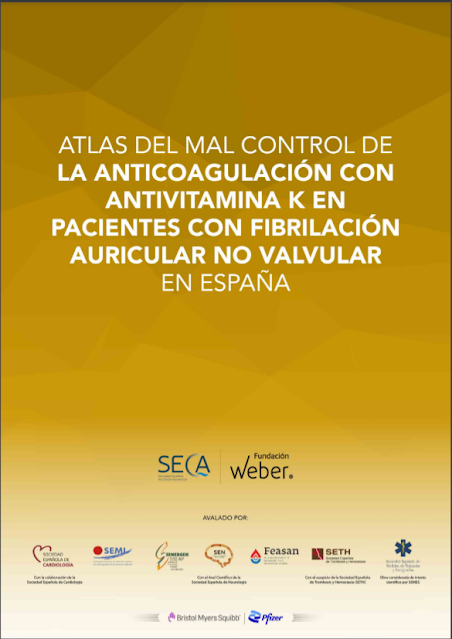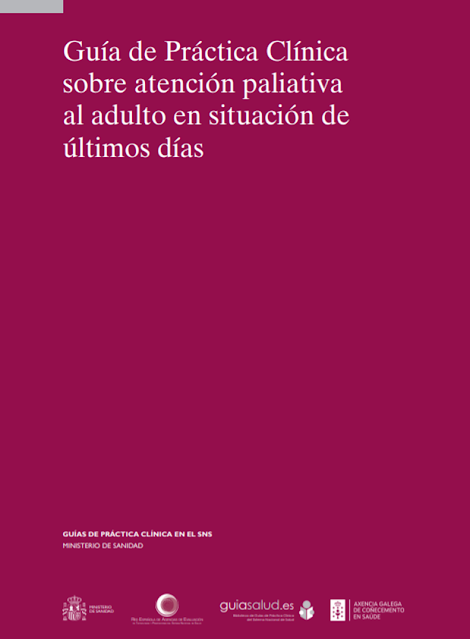VISITAS RECIENTES
We Support The Free Share of the Medical Information

This work is licensed under a Creative Commons Attribution-NonCommercial-NoDerivatives 4.0 International License.
Enlaces PDF por Temas
- AHOGAMIENTO - ASFIXIA POR INMERSION - HIDROCUSION
- ALERTAS SANITARIAS MEDICAMENTOS Y EQUIPOS
- AMBULANCIAS
- Analgesia en EMS y TACMED
- ANATOMIA HUMANA
- ARMA BLANCA y Objetos Punzo-Cortates
- AUTISMO TEA Trastornos Espectro Autista TEA PDF
- BIOSEGURIDAD: Manuales y Guias PDF Gratis
- BUSQUEDA ONLINE DE MEDICOS EN IBEROAMERIA
- CODIGO INFARTO IAM: Todos los PDF Gratis
- BOMBEROS MANUALES PDF
- CAFÉ
- Control de Sangrados Torniquetes TQ STOP THE BLEED
- CORONAVIRUS covid-19
- CURSOS Medicos GRATIS /free online medical courses
- DENGUE todos los PDF Gratis
- DESASTRES: Guias y Manuales PDF Gratis
- Documentos 150 Aniversario ACADEMIA NACIONAL DE MEDICINA/ MEXICO
- ENFERMERIA
- EKG Libros PDF Gratis
- EMERGENCIAS OFTALMOLÓGICAS (oculares) OJOS
- FARMACOLOGIA PDF GRATIS
- GERIATRIA PDFs
- GUIAS CLINICAS PDF GRATIS MEXICO
- HISTORIA DE LA MEDICINA
- HURACANES ,TORMENTAS, CICLONES y TORNADOS
- ISRAEL
- ICTUS Todos los PDF Gratis
- LIBROS DE CIRUGIA EN PDF GRATIS
- MALARIA /Paludismo
- MEDEVAC / TACEVAC / CASEVAC / AROMEDICINA / TRANSPORTE AEROMEDICO
- MEDICINA MARITIMA todos los PDF
- MEDICINA todo lo relacionado a nuestra practica
- MEDICINA TACTICA: PDF Manuales y Guias
- OBESIDAD
- OBSTETRICIA y GINECOLOGIA PDF Gratis
- ocular oftalmologia
- El paquete técnico HEARTS by OMS/OPS
- Oxigenoterapia y Vias AEREAS
- OXIMETRIA todas las publicaciones
- PDFs Psicologia de Emergencias y DESASTRES
- PDF PICADURAS, MORDEDURAS, ARAÑAZOS, EMPONZOÑAMIENTOS
- Protocolos de Atencion Salud Dominicana
- Pediatria
- Perro-Canine-K-9-Firulais-Dugs-Chuchos-Canino
- QUEMADURAS
- RADIOLOGIA DIAGNOSTICO POR IMAGENES
- RCP Reanimacion CardioPulmonar PDF Gratis
- RIESGOS NIÑOS
- TELEMEDICINA
- TES Tecnico en Emergencias Sanitarias
- TRASTORNO ESPECTRO AUTISMO y URGENCIAS PDF
- TRIAJE PDF
- TRAUMA
- ULTIMOS post EMS Solutions Int
- EMS SOLUTIONS INTERNATIONAL
- IMPERIO ESPAÑOL
- PEDOFILIA: ¿COMO EVITAR ABUSO SEXUAL EN MENORES? INFOGRAFIA
- Perro / Vira Lata/ Canine/ K-9/ Firulais Dogs Chuchos/Canino todos los PDF
- REDES SOCIALES DRRAMONREYESMD
- SUBITUS INTERNATIONAL
- TORNIQUETE -TQ -Tourniquet
- Urologia
- VACUNAS
Nota Importante
domingo, 12 de diciembre de 2021
Resuscitation 2022 "European resuscitation congress 2022" 16 and 17 June in Antwerp, Belgium
Save the date! Join us for Resuscitation 2022, our hybrid congress on 16 and 17 June in Antwerp, Belgium.
Can't make it to Antwerp? We've got you covered. On our congress platform you can follow the live sessions and watch exclusive interviews.
More #RESUS22 news coming soon!
¡Reserva! Únase a nosotros para Resuscitation 2022, nuestro congreso híbrido los días 16 y 17 de junio en Amberes, Bélgica.
¿No puedes ir a Amberes? Te tenemos cubierto. En nuestra plataforma de congresos puede seguir las sesiones en vivo y ver entrevistas exclusivas.
¡Más noticias sobre # RESUS22 próximamente!
POSTERS in PDF ERC European Resuscitation Council Guidelines for Resuscitation. The ERC ILCOR 2021
POSTERS in PDF ERC European Resuscitation Council Guidelines for Resuscitation. The ERC ILCOR 2021
POSTERS PDF
BLS-Algorithms-STEP-BY-STEP.pdf
ALS-Algorithms-Advanced-Life-Support.pdf
ALS-Algorithms-In Hospital resuscitation
ALS-Algorithms-Tachycardia.pdf
ALS-Algorithms-Bradycardia
TRAUMATIC CARDIAC ARREST/ PERI-ARREST ALGORITHM
EMERGENCY TREATMENT OF HYPERKALAEMIA
ACCIDENTAL HYPOTHERMIA
MANAGEMENING ACUTE ASTHMA IN ADULTS IN HOSPITAL
CORONARY THROMBOSIS
TOXIC EXPOSURE
CARDIAC SURGERY
CARDIAC CATHETERISATION LABORATORY
DELAYED AND INTERMITTENT CPR IN HYPOTHERMIC PATIENTS WHEN CONTINUOUS CPR IS NOT POSSIBLE DURING DIFFICULT RESCUE MISSIONS
AVALANCHE RESCUE
HYPERTHERMIA
POST-RESUSCITATION CARE
NEUROPROGNOSTICATION FOR THE COMATOSE PATIENT AFTER RESUSCITATION FROM CARDIAC ARREST
RECOMMENDATIONS FOR IN-HOSPITAL FUNCTIONAL ASSESSMENTS, FOLLOW-UP AND REHABILITATION AFTER CARDIAC ARREST
Post-Resus-Algorithms
APPROVED-NLS-Algorithms-portrait-4_2021-03-23-153459
PAEDIATRIC BASIC LIFE SUPPORT
PAEDIATRIC ADVANCED LIFE SUPPORT
PAEDIATRIC FOREIGN BODY AIRWAY OBSTRUCTION
EDUCATION-Algorithms-L/S
EDUCATION-Algorithms-L/S
EDUCATION-Algorithms-L/S
EDUCATION-Algorithms-L/S
EDUCATION-Algorithms-L/S
EDUCATION-Algorithms-L/S
#ERC_resus 2021
All Downloads
http://emssolutionsint.blogspot.com/2021/03/erc-european-resuscitation-council.html
The European Resuscitation Council Guidelines for Resuscitation provide specific instructions for how resuscitation should be practiced and take into account ease of teaching and learning, as well as the science. They were developed by Europeans and have been specifically written with European practice in mind.
domingo, 28 de noviembre de 2021
Spanish Army Chooses the Pyng Medical FAST1 Intraosseous Infusion System
 |
| Spanish Army Chooses the Pyng Medical FAST1 Intraosseous Infusion System |
Spanish Army Chooses the Pyng Medical FAST1 Intraosseous Infusion System
 |
| Spanish Army Chooses the Pyng Medical FAST1 Intraosseous Infusion System |
 |
| Spanish Army Chooses the Pyng Medical FAST1 Intraosseous Infusion System |
miércoles, 24 de noviembre de 2021
10 reglas de Chamberlain para identificar un #EKG normal
10 reglas de Chamberlain para identificar un #EKG normal
Regla 6:
La onda R en las derivaciones precordiales debe crecer de V1 a por lo menos V4
La onda S en las derivaciones precordiales debe crecer desde V1 hasta al menos V3 y desaparecer en V6.
Regla 7:El segmento ST debe comenzar isoeléctrico excepto en V1 y V2 donde puede ser elevado
Regla 9: No debe haber una onda Q o sólo una pequeña q menor de 0.04 segundos de ancho en I, II, V2 a V6
Regla 10: La onda T debe estar en posición vertical en I, II, V2 a V6
Prevención de riesgos asociados a ELIGARD (acetato de leuprorelina) by AEMPS Reino de España
Información sobre prevención de riesgos acordada con la Agencia Española de Medicamentos y Productos Sanitarios (AEMPS) Octubre-2021 |
Estimado/a Profesional Sanitario:
Le adjuntamos una copia electrónica de los siguientes materiales sobre prevención de riesgos asociados a la utilización de ELIGARD (acetato de leuprorelina):
- Como utilizar Eligard (video):
Cómo utilizar Eligard (leuprorelina)
- Instrucciones de preparación y administración (poster):
https://cima.aemps.es/cima/
- Ficha Técnica del medicamento:
https://cima.aemps.es/cima/
https://cima.aemps.es/cima/
https://cima.aemps.es/cima/
El objetivo de estos materiales es ayudarle a minimizar la posibilidad de aparición de algunos riesgos que se consideran relevantes por su gravedad, y aportar al paciente la información o documentos necesarios para tal fin.
Por favor, si usted desea copias en papel de los materiales dirigidos al paciente, solicítelas en el siguiente correo electrónico info@casenrecordati.com
Estos materiales también están disponibles en la web de la AEMPS en el siguiente enlace: https://cima.aemps.es/cima/
Quedamos a su disposición en caso de requerir alguna aclaración adicional.
Un cordial saludo,
Sociedad Española de Médicos Generales y de Familia – SEMG
Pº Imperial, 10 - 12, 1ª Planta - 28005 Madrid
Tef.: + 34 91 364 41 20
Fax: + 34 91 364 41 21
e-mail: semg@semg.es
lunes, 22 de noviembre de 2021
sábado, 20 de noviembre de 2021
III Congreso Internacional. SAMU 10 años salvando vidas. Perú 23 y 25 de Noviembre 2021
III Congreso Internacional. SAMU 10 años salvando vidas.
Para todos los que conocemos el entorno de las emergencias prehospitalarias y las distintas fases de su proceso asistencial celebramos los 10 años de SAMU salvando vidas en Perú.Estaremos en el congreso y así será.
Descarga aquí el programa: https://lnkd.in/gZraGScD
martes, 16 de noviembre de 2021
domingo, 14 de noviembre de 2021
Manejo del traumatismo craneal pediátrico
 |
| Guía de manejo en servicios de urgencias Trauma craneoencefálico y raquimedular en la población pediátrica |
Manejo del traumatismo craneal pediátrico
Bajar PDF
Ignacio Manrique Martínez1,
Director Instituto Valenciano de Pediatría. Valencia
Pedro Jesús Alcalá Minagorre
Centro de Salud de Alfaz del Pí, Alicante.
Traumatismos craneoencefálicos
Carlos Casas Fernández
S. de Neuropediatría Hospital U. Virgen de la Arrixaca. El Palmar (Murcia)
Bajar PDF
Traumatismo craneoencefálico en la infancia
J. Benito Fernández
Jefe del Servicio de Urgencias de Pediatría. Hospital de Cruces
(Servicio Vasco de Salud-Osakidetza). Baracaldo.Vizcaya.
Bajar PDF
Rosalba Pardo Carrero, MD
Especialista en pediatría de la Pontificia Universidad Javeriana
Especialista en cuidado intensivo pediátrico
Docente Universidad del Rosario
Jefe de la Unidad de Cuidado Intensivo
Clínica Infantil Colsubsidio
Enlace para bajar gratis en pdf
 |
| Recomendaciones para la Vigilancia domiciliaria tras un TEC que no requiere atención hospitalaria en la primera valoración clínica |
Atlas del Mal Control de la Anticoagulación con Antivitamina K en Pacientes con Fibrilación Auricular no Valvular en España
Atlas del Mal Control de la Anticoagulación con Antivitamina K en Pacientes con Fibrilación Auricular no Valvular en España
📕 Atlas del Mal Control de la Anticoagulación con Antivitamina K en Pacientes con Fibrilación Auricular no Valvular en España
Guía de Práctica Clínica sobre atención paliativa al adulto en situación de últimos días
Guía de Práctica Clínica sobre atención paliativa al adulto en situación de últimos días
OBJETIVOS
El objetivo de esta Guía de Práctica Clínica es servir como instrumento para mejorar la atención sanitaria de las personas en situación de últimos días y de sus familias, en los distintos ámbitos y centros donde sean atendidos (atención hospitalaria, atención primaria, atención en domicilio, servicios de urgencias y centros sociosanitarios). Se abordan las siguientes áreas clínicas: reconocimiento de la situación de últimos días, comunicación e información, toma de decisiones compartida y desarrollo del plan de cuidados, hidratación, manejo de síntomas (dolor, disnea, náuseas y vómitos, ansiedad, delirium y estertores) y sedación paliativa. También se incluye información sobre aspectos ético-legales y un documento de información para familiares y allegados.
ENTIDADES
Entidad/es financiadora/s: Ministerio de Sanidad
Entidad/es elaboradora/s: Agencia Gallega para la Gestión del Conocimiento en Salud (ACIS). Unidad de Asesoramiento Científico-técnico, Agencia de Evaluación de Tecnologías Sanitarias de Galicia / Unidad de Asesoramiento Científico-técnico (avalia-t)
Entidad/es promotora/s: Agencia de Evaluación de Tecnologías Sanitarias de Galicia / Unidad de Asesoramiento Científico-técnico (avalia-t), Ministerio de Sanidad. Agencia Gallega para la Gestión del Conocimiento en Salud (ACIS). Unidad de Asesoramiento Científico-técnico
ENFERMEDADES
(C00-D49) NEOPLASIAS
ENFOQUE
Promoción de la salud, Tratamiento


































